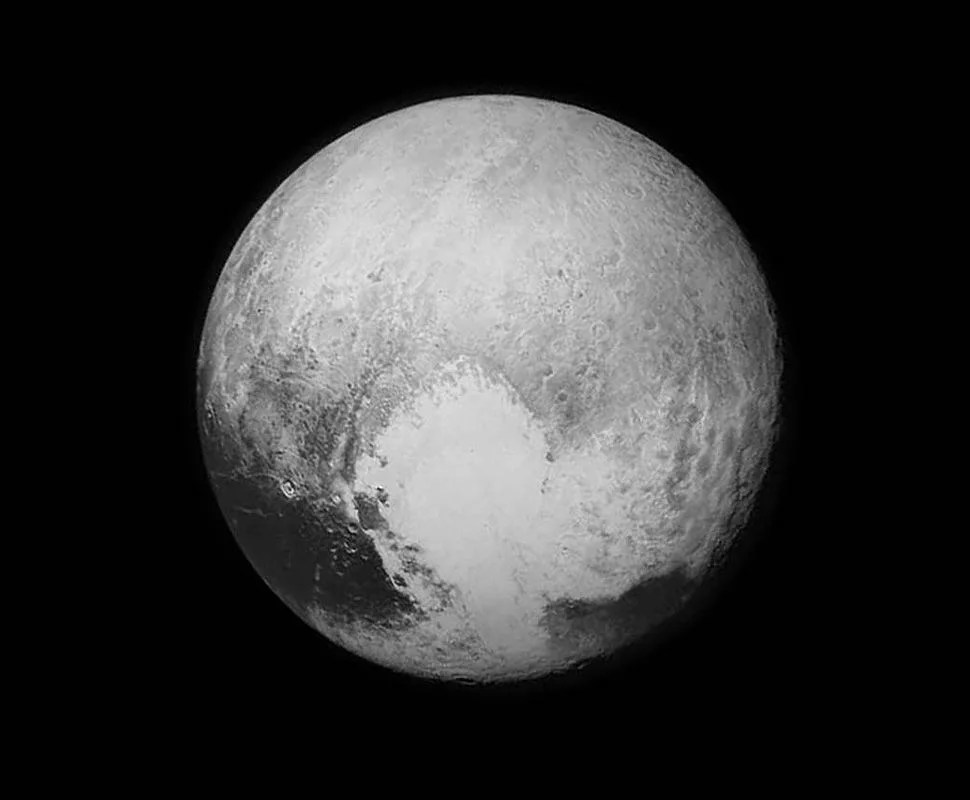Many astronomy enthusiasts say they feel small and insignificant when confronted with the vastness of space. The distances are beyond comprehension; the loneliness absolute. Our sci-fi-fueled visions of close proximity and easy access to our celestial neighbors are, we know deep down, nonsense, and will be even when — and if — we develop some way of traversing great distances with anything approaching galaxy-spanning speed. Lightyears may become hyper light-months, if we’re lucky. This is the hard reality of deep space.
But this week, time and space compressed for a few amazing days. NASA’s New Horizons probe, after a 10-year, three-billion-mile voyage that would seem to underscore this soul-crushing separation, made our cosmic neighborhood feel suddenly as close and intimate as the borders of any small town on Earth. Until this week, the dwarf planet Pluto has been, at best, a fuzzy blob even in the powerful Hubble Space Telescope, and it suffered the controversial indignity, in 2006, of being demoted from the solar system’s starting lineup. But when New Horizons sent back, via an excruciatingly slow bit-by-bit downlink, a single, spectacular photo, it froze us in our tracks.
The planet is strikingly beautiful, even without the heart-shaped discoloration that has undoubtedly revved the engines of teenage poets across the globe. Suddenly, Pluto was all over the web and social media. Memes and photos were tweeted, Instagrammed and Facebooked. In fact, it’s been pretty much a weeklong virtual party that even seemed to exceed that of the Rosetta probe’s dramatic landing on an asteroid less than a year ago.
Why? Because it was a photo — something we can all comprehend and relate to. Most astronomers deal in data, reams of it produced by sensors and instruments, and what they learn tends toward the esoteric. They never sit at telescope eyepieces anymore, and even the images released to the public by scientific observatories are heavily processed to make them more appealing, usually with artificial color added. The first major missive from New Horizons, however, was a thunderbolt of interplanetary awesomeness, only lightly edited.

There will be lots of terrific intel generated by the probe as it slowly and methodically transmits the data it has already captured back to Earth. The truly amazing thing about science in general, and astronomy in particular, is that every discovery teaches us something about something else. We’ve already learned that Pluto appears to have an active geology, generating heat on its own to supplement the meager warmth it receives from the distant Sun. That will teach us about other planets in the galaxy. Indeed, every piece of data that we acquire expands our knowledge of how the universe works, and how solar systems beyond our own might work.
In hindsight, this makes the struggle that New Horizons’ creators, the Johns Hopkins University Applied Physics Laboratory and the Southwest Research Institute, endured to get this probe off the ground against intense opposition from NASA particularly mystifying. Was the launching this small, economical platform all the way to Pluto worth it? If this week’s reaction from the scientific community and the public at large is any indicator: yes. It moves the ball forward. Toward what? Who knows — perhaps our own successful exploration of regions far beyond Pluto, with all the future Instagram-worthy images that will go along with it.
